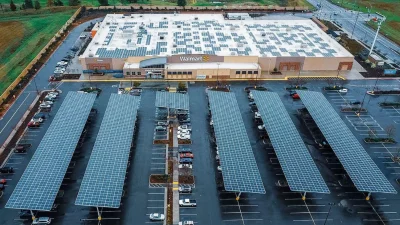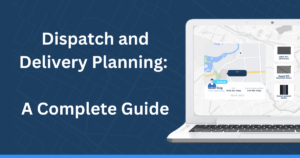As the world continues to grapple with climate change, Walmart commits to an ambitious goal of achieving net-zero emissions by 2040. Its strategy provides a roadmap for businesses – big and small – to contribute to a sustainable future.
Even though Walmart’s climate action plan was created for a massive multinational retail corporation, the blueprint offers valuable guidance for smaller businesses too.
Earlier this month, Walmart shared insight on how it manages and oversees the plan, saying it aims to “create an environment of accountability, transparency, and trust in our business that fosters business integrity, financial stability, and responsible and long-term growth.”
Walmart leading by example
Vishal Kapadia, senior vice president for energy transformation at Walmart says the company will deploy a fast-charging network for electric vehicles across its stores. This would encourage more customers to transition to electric vehicles (EVs).
Walmart aims to address ‘range anxiety,’ the stress from being unable to find an EV charger when you need one. By providing a charging network, Walmart will ease that worry for thousands of consumers since there’s a Walmart within 10 miles of most Americans.
Kapadia explains: “There are issues around anxiety and customer experience that are really keeping a lot of folks from taking that plunge and purchasing an electric vehicle. [Walmart is] well suited to address range anxiety in a way that few others are.”
Climate action as a business imperative
Apart from saving the planet, fighting climate change also has a favorable impact on operational stability and supply chain resilience. This is due to climate initiatives that focus on value preservation.
Kapadia says as the grid transitions to renewable energy sources, it could be challenging to ensure consistent, uninterrupted power supply. Since Walmart aims to be ‘always on,’ it needs to function continuously without interruptions.
While adapting to a green grid, Walmart would also need to plan for and manage any disruptions to ensure continuous business operations. Hence the company’s focus to reduce emissions.
The first steps towards Walmart’s emissions-free strategy will be to focus on transportation facilities, since that is where most emissions originate. But Walmart cannot afford to take its vehicles and refrigerants offline.
It’s almost like performing open-heart surgery on a patient who is awake, says Kapadia. “It requires close collaboration. […] It’s very much about partnering across our organization and across all of the different functions within our organization.”
Engaging the supply chain
Walmart also created Project Gigaton to engage its vast network of suppliers. The project aims to reduce carbon emissions by a billion metric tons within the next seven years. Walmart achieved nearly 75% of its goal already.
It has done so by educating supply chain partners and other suppliers about the importance of having a viable climate action plan in place.
“[It] was really a mechanism for suppliers to be able to be incentivized to report on the types of projects and initiatives that they’re undertaking to push emissions out of their supply chain,” Kapadia says.
“As we decarbonize our operations, [we’re] creating models and templates that we can utilize to bring to our suppliers that they can go faster, and further, and decarbonize their operations.”
The bigger picture
In a statement released in May 2023, Walmart says its climate strategy “includes adapting operations and sourcing to enhance resilience in the face of factors related to climate change, including warming, drought, and extreme weather events.”
“We advocate for climate policy through engagement of policy makers, industry associations and multi-stakeholder coalitions, as well as through corporate communications.”
As businesses follow suit and start to acknowledge their environmental responsibilities, these strategies outlined above provide a valuable model for achieving sustainability.
These initiatives are a testament to the power of corporate leadership in fostering sustainable change, and highlight the role businesses – both large and small – can play in combating climate change.
About the author
Cheryl has contributed to various international publications, with a fervor for data and technology. She explores the intersection of emerging tech trends with logistics, focusing on how digital innovations are reshaping industries on a global scale. When she's not dissecting the latest developments in AI-driven innovation and digital solutions, Cheryl can be found gaming, kickboxing, or navigating the novel niches of consumer gadgetry.












